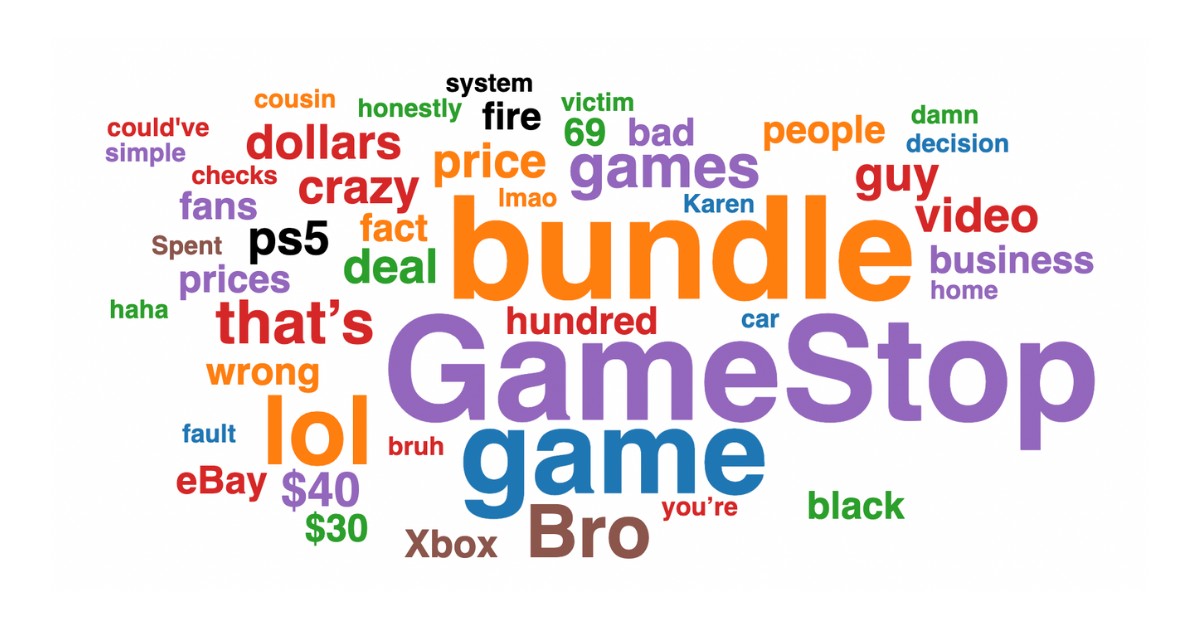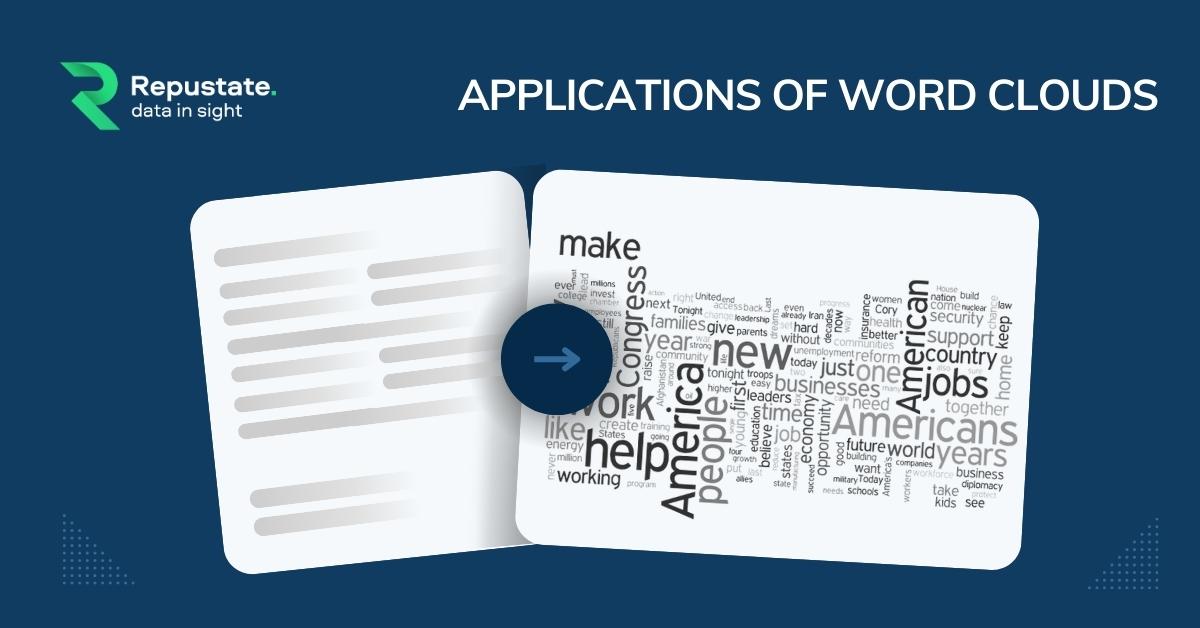Applications of A Word Cloud Generator
There are several word cloud applications, both in terms of academic use, and in business. Word clouds are word collages that are used to summarize important data points for PowerPoint or SlideShare presentations as well as to set the precedent for further data analysis for business and marketing strategies. These could be for strategic purposes such as customer feedback analysis or learning about employee experience.
In this article, we discuss the most popular applications of word clouds and also see how they are computed.
What Is A Word Cloud?
A word cloud is a cluster of keywords in different sizes that represents the metadata in the A word cloud is a visual tool that summarizes a data set. Word clouds can tell you which words, and thus, what elements in your data are mentioned the most and which aren’t, thus giving you a direction in which to analyze your insights further. Word clouds are represented in the form of words that are formatted differently based on their relevance. Thus the more important the word, the bigger, bolder, and more centrally placed it is - thus taking the shape of a cloud.
For example, here is a word cloud based on TikTok insights generated by Repustate IQ, Repustate’s sentiment analysis solution, using TikTok comments on GameStop - one of the world’s largest video game retailers.

What Are The Applications Of A Word Cloud Generator?
Word clouds have multiple uses because of their ability to provide an aggregated, easy-to-understand view of important data points. They are used most often in summarizing large documents such as surveys, academic and research papers, news stories, product reviews, and so on. The following are 5 major word cloud applications.
1. Visual Tools
One of the most common applications of word clouds is their use as visual tools to get a qualitative representation of the insights when data is analyzed. Sentiment analysis or text analytics insights need to be presented to stakeholders in a way that is easy to comprehend and discuss, and word clouds help with that.
Apart from quantitative methods such as charts, graphs, and percentile figures, word clouds break the monotony of numerical data analysis and provide a holistic view of insights through word-based representations of crucial data points. This is especially useful in areas such as social media sentiment analysis where it is important to go beyond quantitative metrics like the total number of likes, shares, or dislikes.
2. Summarizing Key Data Points
Word clouds are used often in summarizing huge amounts of data, especially in research, documentation, manuals, academia, and other text data. They are also often used in marketing functions to have a quick overview of customer pain points from voice of the customer analysis.
Word clouds are especially useful in analyzing open-ended survey responses where you want to know the topic highlights in the data. However, this should be followed up with a more in-depth analysis to get more accurate and substantial insights.
Read about the importance of sentiment analysis in survey data.
3. Team Discussions & Audience Feedback
Word cloud applications also include their use in getting audience feedback during seminars and team discussions to measure how much information they have retained. Similarly, audiences can be polled on a number of topics and then shown the most common answers through word clouds. Such tactics are known to increase audience engagement and influence attention spans.
Word clouds are further useful in office team discussions because they can be created in real-time to understand qualitative metrics about marketing and advertising campaigns, employee experience strategies, incentive programs, and other functions.
4. Client Presentations
Word cloud applications also include having word clouds in formal client presentations, where you can use real-time data to create impromptu word clouds as well as have word clouds embedded in presentation slides. They are an important part of infographics, which are highly useful content marketing tools that are used to make boring data look interesting. Statistics prove that content with infographics receives more engagement than those without a visual element.
Several word cloud generators also give you the ability to choose the color and font of the words based on their importance to the data, the order in which you would like them to appear, as well shapes in which you want to generate your word cloud.
5. Prompts Further Data Analysis
Vanity metrics such as likes, shares, or views, do not provide any type of substantial insight into the mind of the customer. Nor do visual elements like word clouds. However, they do pique the interest of marketers who would like to know the reason behind customer behavior, which is evident in such qualitative and quantitative metrics.
Therefore, another one of word cloud applications is their use in further propelling data analysis so that you can get to the root of why certain words are showing up as more prominent compared to others.
Limitations Of Word Clouds
Even though word clouds are easy to understand and great for discussions, they have certain limitations because of which you cannot use them in isolation for business decisions. These drawbacks are such as -
- Word Clouds do not give any granular information about the aspects
- They capture semantic information and thus give redundant information
- They cannot capture audience sentiment or complex themes
- Word clouds do not have analytical accuracy
How Do You Create A Word Cloud Using Repustate IQ?
Repustate enables you to create word clouds that are driven by machine learning so that you can analyze insights for review sentiment analysis or general text analytics on the customer insights dashboard. You can use any data type including text, audio, or video.
Here is an overview of the sentiment analysis steps through which you can instantly generate a word cloud with Repustate IQ.
Step 1: Fetch Data
Once you use the aspect model suited to your industry (hospitality, banking, education, etc.) you can choose to upload data directly from an online source (Amazon reviews, Facebook, Instagram social listening data, etc.). You could also upload data in an excel file.
Step 2: Process Data
In this step, data is cleaned and prepared for analysis. Audio and video data is transcribed using speech-to-text software and added to the text pipeline so that it can be analyzed for sentiment later. It is important to note that Repustate IQ also processes non-text data in text such as hashtags and emojis. This is because analyzing emojis can help with more accurate sentiment analysis, especially with social media data.
Step 3: Data Analysis For Word Cloud Applications
The data is analyzed by several ML tasks that include natural language processing (NLP), semantic clustering, and named entity recognition (NER) so that topics, themes, and aspects can be identified, categorized, classified, and eventually analyzed for sentiment.
Semantic classification ensures that there is no redundancy in data as it clusters similar words based on the extent of their synonymity. NER allows the tool to extract every entity such as person, place, currency, business, etc. mentioned in the data for more contextual analysis. This task is further assisted by knowledge graphs and neural networks.
Step 4: Word Clouds Insights
You can now see the aggregate sentiment score for the document and capture the word cloud. You can easily compare the aspect sentiments as well as essential words and phrases to the word cloud. This way you have the word cloud as well as more in-depth insight into the data.
Conclusion
Word cloud applications go beyond just being visual representations of text based on their ranking in the data. As we have seen, they can be used in summarizing important information in large documents as well as to see key data points that can be analyzed further for more in-depth insights.
In order to get the most out of word clouds, you need to use a text analysis API to get granular findings that could give you critical aspect-based insights from your marketing data.
 Home
Home
 Dec 13, 2022
Dec 13, 2022

 Jeremy Wemple
Jeremy Wemple
 Dr. Ayman Abdelazem
Dr. Ayman Abdelazem
 Dr. Salah Alnajem, PhD
Dr. Salah Alnajem, PhD
 David Allen
David Allen

 Repustate Team
Repustate Team

